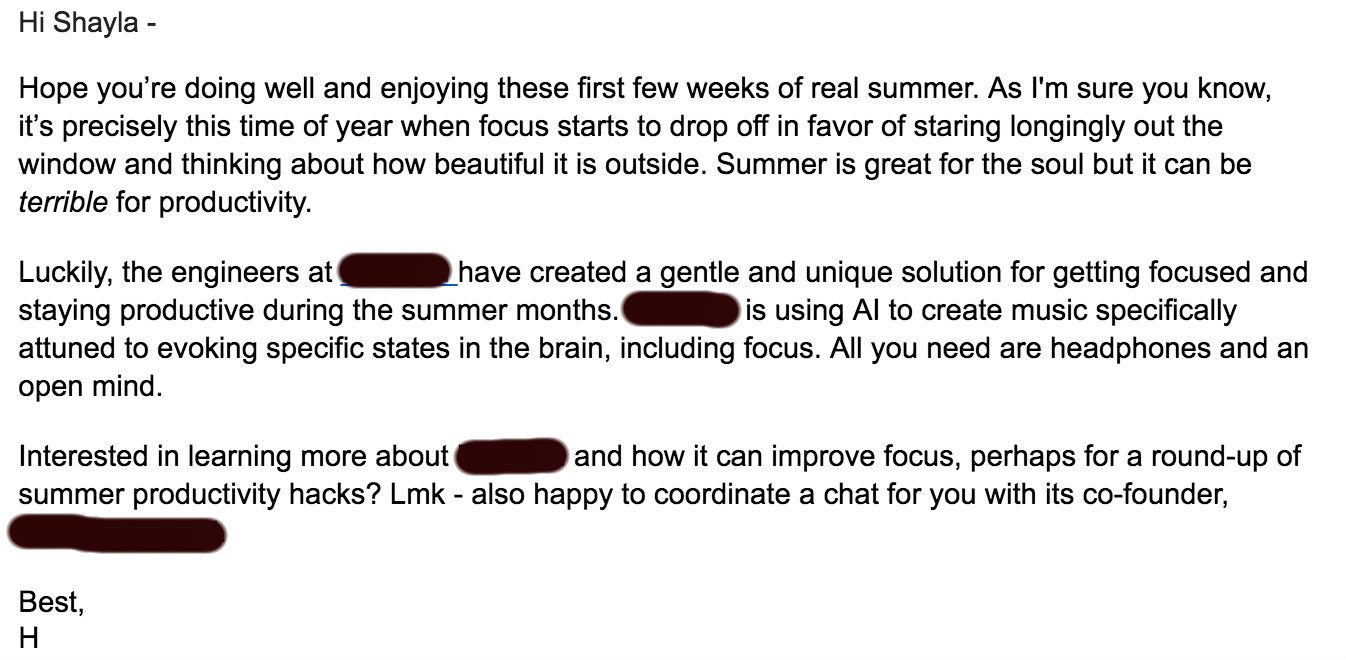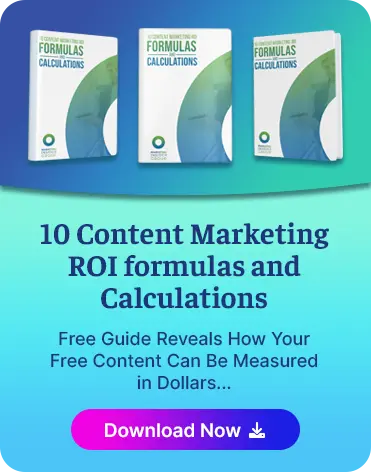
Why Most Outreach Emails Suck
For most people, email outreach isn’t just difficult—it’s embarrassing.
Persuading a blogger, journalist, or influencer is not for the weak-hearted. You only have a few seconds to grab the person’s attention.
That’s why crafting an effective outreach email is important. The goal is not to bore the recipient or waste her time. If you do, your pitch will never receive a response.
Here are five reasons why your emails suck and how you can fix them:
1. No Introduction
Too many outreach emails miss the mark by not having an introduction. Instead, they go right into a long spiel.
When it comes to introductions, keep it simple. Greet the person and use his first name.
Research shows an increase in brain activation when we hear (or read) our own name. We are more likely to pay attention to the message if it is directly addressed to us.
Next, let the individual know who you are. Provide your name, job title, and the company you represent (if applicable).
The recipient doesn’t need to know exactly what you do or when you do it. It’s irrelevant to the conversation.
A good introduction builds trust. So, make sure you write one.
2. Too Lengthy
Brevity is the cornerstone of email outreach. Some influencers receive up to 500 emails per day.
Their schedules are hectic, and they don’t have the time or energy to read a verbose message.
Pitch strong. Pitch fast.
Skip the appetizers and jump right into the main course. Short, straightforward outreach emails have the greatest impact.
Justin McGill, founder of LeadFuze, offers a recommendation:
“Keep it two to four sentences and five sentences at the MOST. Anything beyond four sentences and you’re going to start seeing your response rates decline.”
Below is an actual email I received. It’s too long.

Time is precious. Be short.
3. No Real Connection
Why should the blogger care?
When you email people, keep in mind their goals and desires. Your message should offer some type of benefit to the individual.
How will it help them? What will they receive in return?
The key is to build a real connection with the person. Influencers simply prefer to do business with people they know. To build rapport, do your research.
“If you want to make a connection and especially if you are hoping for something from this individual, do your homework, and a lot of it, before writing to them,” writes Forbes contributor Kathy Caprino.
It’s also wise to add social proof to create a bond. Mention a referral’s name. Or a recent success that matters to the influencer.
In the email below, the writer goes directly into the pitch. No introduction. No real connection.
Explain how your email will benefit the person. Establish a relationship.
4. Vague Ask
No one should read an outreach email and not know exactly what you want. But it happens all the time.
Be upfront with your ask. Create an actual question, not a statement with a question mark.
And be transparent. Don’t trick the blogger into a task that requires more than originally stated.
For example, you may ask someone to include a link to a specific post. Don’t come back two days later asking for three links. It’s unprofessional.
In the email above, the writer fails to ask a question. Also, why does this person need feedback?
Freelance writer Michelle Nickolaisen prefers the direct approach:
“Please don’t send me an article just ‘because you thought I might find it interesting.’ I have to reply to that email, it’s a whole thing. Just ask me to tweet it. I’ll almost certainly do it as long as it isn’t a hot mess, just to get out of this awkward email exchange.”
Develop a blunt ask. And be honest about what you want.
5. No Option to Opt-Out
People learn that persistence elicits a response. If you keep trying, something will happen in your favor eventually.
But this principle doesn’t always apply to outreach emails. Sending four to five messages to a person in a two-week time span isn’t persistent. It’s annoying.
Some influencers will just ignore your emails and delete them. Others will tag your emails as spam. So, offer a clear opt-out.
“If it’s just you sending a note, one-on-one, to someone else, you can simply mention, ‘let me know if you’re not the right person to discuss this,’ or a footer, ‘to unsubscribe from future messages, simply reply and say so!’” writes Igor Belogolovsky, former director of marketing at Rocket Lawyer.
Try using the following opt-out language in your next outreach email. It’s very simple.
Avoid backing the influencer into a corner. Give them an option to say no.
Write Better Emails
Email outreach is challenging. But if you focus on the recipient, you’ll create a message worth reading.
Include a quick introduction. Craft short, straightforward sentences. And be bold with your ask.
Think about the reader. Write better emails.










